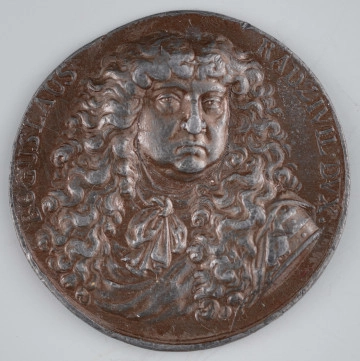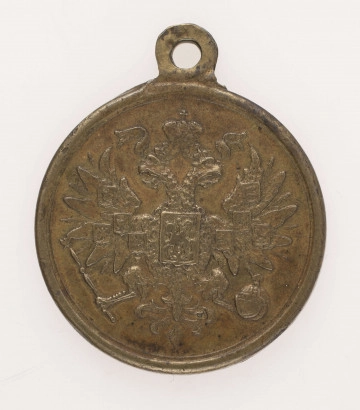
Bogusław Radziwiłł - posthumous medal
1669
National Museum in Lublin
Part of the collection: Polish medallic art.
The period of John Casimir’s reign saw a continuation of the tradition of medal-making that had begun under Sigismund III Vasa. The art was still highly regarded, and although John Casimir did not follow in his father's footsteps and did not try to make medals himself, he valued both the artists and their products. Gdańsk was a particularly thriving medal-making community at that time. Wealthy mainly from the Polish grain trade and retaining considerable autonomy within the Kingdom of Poland, it tried to emphasise its loyalty to the ruler on various occasions. One of them was the 200th anniversary of the signing of the Act of incorporation of Prussia into Poland by Casimir the Jagiellon. At the same time, it was one of the most important events starting the thirteen-year war with the Teutonic Order. The Gdańsk city council entrusted Jan Höhn senior with the task of commemorating that anniversary by minting a medal. He was one of the most outstanding 17th-century medal makers connected with Poland. He was born in Strasbourg in 1607. In 1641 he was granted citizenship of Gdańsk, although he had already lived in that city for several years. Initially, he cooperated with Sebastian Dadler, but after Dadler's departure in 1647 he became the main medallist and engraver of the mint stamps of Gdańsk. The commission to commemorate the incorporation of Gdańsk into Poland he realised in the period of the greatest flourishing of his talent. He showed the links between Prussia and Gdańsk with Poland in a symbolic way - the Polish heraldic eagle was placed against the background of the sky, which was supposed to symbolise the divine basis of the Polish rule over Prussia. Below, the coat of arms of Royal Prussia was placed as an eagle with a crown on its neck and a sword raised above its head. At his feet, Jan Höhn placed a shield with a cross, symbolising the Teutonic Order defeated in 1454-1466. Above the whole scene, there was a tetra gram in sunlight, the name of God written in Hebrew. It was to signify the divine basis of Polish rule over the Baltic Sea. Medals designed by Jan Höhn were given to prominent citizens of Gdańsk on 6 March 1654, i.e. on the anniversary of the act of incorporation of Prussia into Poland by Casimir the Jagiellon.
The presented medal is a late, 19th century cast made of tin. Original copies were struck in gold or silver.
Leszek Poniewozik
Dimensions
cały obiekt: width: 54 mm
Technique
cast
Material
tin
Creation time / dating
Creation / finding place
Owner
The National Museum in Lublin
Identification number
Location / status

1669
National Museum in Lublin

1660
National Museum in Lublin

National Museum in Lublin
DISCOVER this TOPIC
National Museum in Lublin
DISCOVER this PATH
Educational path